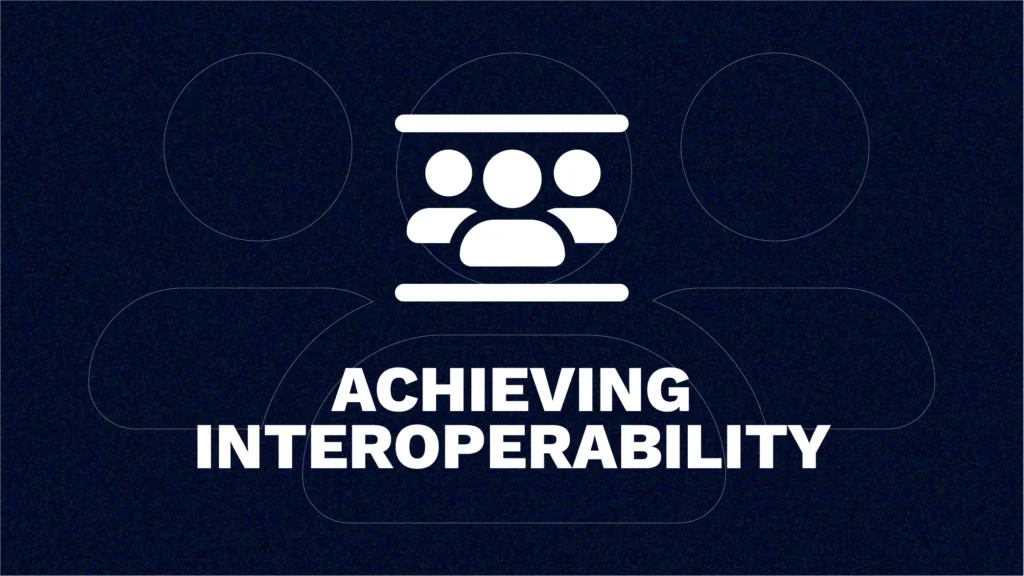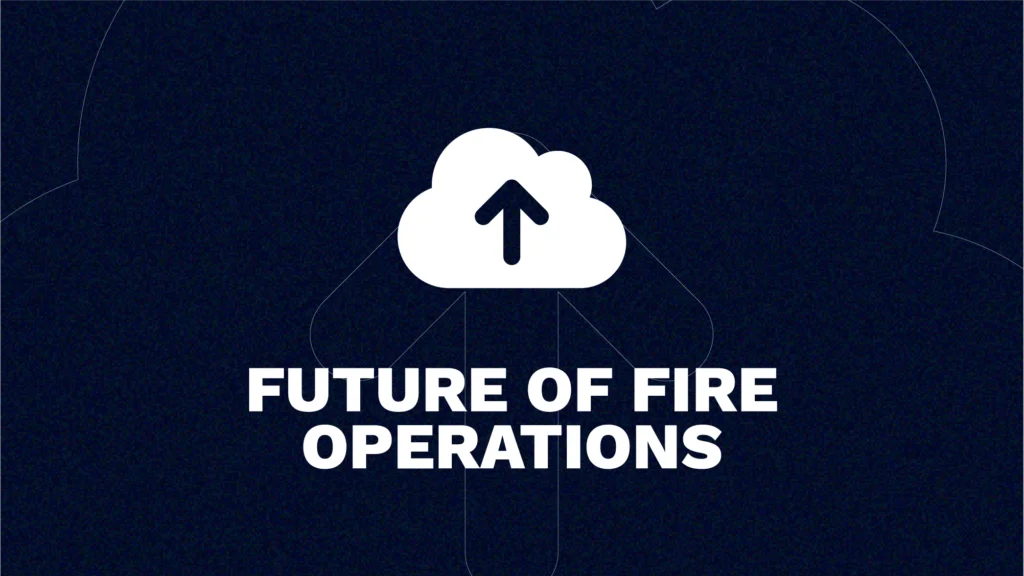Introduction
Interoperability in fire operations is essential for effective emergency management, facilitating seamless coordination and communication between different agencies, technologies, and resources. From managing wildfires in challenging environments to handling urban fire incidents, the ability of different systems to work together is critical. This integration empowers firefighters to make quick decisions, use resources wisely, and protect communities. As we tackle today’s complex emergencies, the combination of integrated response systems and interoperable technologies is shaping the future of crisis management. This post will explore the core principles, practical uses, and emerging innovations in interoperability that enhance our capacity to safeguard communities and manage disasters more efficiently.
The Essence of Interoperability:
Interoperability is key for effective emergency management. Imagine a city where each building is a different emergency response agency like fire, police, and EMS. While these agencies stand robust on their own, they need to connect seamlessly during disasters, much like a city’s network of roads and bridges facilitating smooth traffic flow. This connection allows resources to be quickly and efficiently directed to where they are most needed. However, achieving this level of coordination is challenging.
In fire services, the challenge of interoperability arises from the diverse communication systems, equipment standards, and training protocols across various agencies and departments. For an effective response, these elements must work together without gaps, as any inefficiency can impede communication and coordination during emergencies. Collaboration is crucial in this context. Emergency management organizations must work together with different agencies and technology providers to tackle these challenges. Through sharing resources, exchanging knowledge, and coordinating efforts, collaboration creates a synergy that drives progress towards better interoperability and ensures a coordinated response during emergencies.
However, collaboration is not enough without sufficient funding. Emergency management organizations often face financial constraints that hinder their ability to invest in necessary technological solutions, training, and infrastructure improvements for interoperability. Adequate funding is crucial to support these investments and advance interoperability efforts.

The Necessity for Interoperability in Fire and Emergency Management:
Interoperability is important for effective emergency response. In emergency management, the ability to coordinate smoothly and communicate clearly among various agencies is essential. Interoperable technologies allow managers to collaborate efficiently, enabling them to share critical information and resources necessary to manage emergencies and protect lives and property. Without these capabilities, coordination efforts may be hampered, leading to potential delays and confusion in urgent situations.
In fire operations, the unpredictable nature of emergencies makes interoperability especially important. Emergencies do not adhere to predefined boundaries or jurisdictions. Situations such as wildfires, natural disasters, and other crises can escalate quickly, requiring immediate and coordinated responses from multiple agencies. If communication systems and protocols aren’t standardized, the exchange of essential information can be delayed, causing confusion and potentially dangerous outcomes.
Interoperability also improves situational awareness. When firefighters and incident commanders have access to seamless data exchange across different platforms, they obtain a better understanding of the ongoing situation. This allows them to use resources more wisely, foresee upcoming challenges, and modify strategies to reduce risks and protect everyone involved.
Additionally, interoperability promotes cooperation and aid among different emergency management agencies and departments. It removes barriers to information and resource sharing, enabling multiple organizations to respond more effectively together. This not only makes emergency responses more efficient but also highlights interoperability as an important operational tool in modern fire operations, helping organizations to better serve their communities.
Practical Examples of Interoperability in Action:
Here are a few examples where interoperable systems significantly improve emergency response. During a wildfire spreading quickly through tough terrain, the risk to homes and communities increases sharply. Rapid response is crucial, and it’s vital that fire departments can communicate effectively with other agencies. Interoperable communication tools, integrated emergency response systems, and GIS technology are key in these situations.
For example, a fire department with advanced GIS mapping can work together with neighboring departments through interoperable communication systems. Sharing real-time data about the fire’s progress and potential dangers helps them develop coordinated strategies for containment and evacuation. This joint effort, supported by interoperable technologies, leads to better resource allocation and can significantly reduce the impact of the wildfire on affected communities.
Consider another situation where emergency medical services (EMS) face a mass casualty incident in a densely populated area. Here, the importance of interoperable emergency management technology becomes clear. EMS teams, equipped with data analysis systems, can better assess injury severity and prioritize treatment. Communication tools help ensure smooth coordination among EMS personnel, hospitals, and other first responders. By using these integrated technologies, responders can efficiently triage patients, allocate resources effectively, and provide timely medical care.
These instances show the real-world advantages of interoperability in both fire operations and broader emergency management. By leveraging integrated systems and collaborative strategies, emergency responders can boost their effectiveness, decrease response times, and save lives. As technology evolves, adopting interoperability will remain crucial for effectively meeting the demands of dynamic emergency situations.
Challenges to Achieving Interoperability:
Several obstacles complicate the achievement of full interoperability in emergency management. The dynamic nature of emergencies demands continuous and effective communication. Each type of emergency, be it a natural disaster, a mass casualty event, or a large-scale fire, requires a response tailored to its specific conditions. This need for specificity makes it essential for emergency management technology to be both robust and flexible, capable of adapting quickly to changing scenarios.
Additionally, the diverse needs and operational contexts of different fire departments pose significant challenges. What is effective for a large urban fire department might not work for a rural volunteer fire brigade. This variation in structure, resources, and priorities calls for a technology approach that is customizable and scalable to meet the particular needs of each department.
Given these challenges, the importance of adopting flexible and adaptable technology solutions is clear. Emergency management organizations should focus on platforms that can integrate smoothly with existing systems, meet diverse operational needs, and evolve with changing emergency conditions. By adopting technology that is adaptable to the specific requirements of each department, interoperability can be achieved, leading to more efficient and coordinated responses to emergencies.

Steps Towards Interoperable Solutions:
Improving interoperability in emergency management requires deliberate and strategic actions. Organizations aiming to enhance their fire operations and emergency response systems should start by adopting open standards. Standardized protocols help ensure compatibility across different systems and technologies, establishing a strong base for interoperability. Additionally, it’s crucial to invest in emergency management technologies that are scalable and adaptable. These technologies must be able to evolve with the constantly changing demands of emergency situations to maintain their effectiveness and resilience.
Collaboration is also vital in developing interoperable solutions. Organizations should actively seek partnerships with technology leaders, software vendors, and emergency response teams. By combining a variety of expertise and resources, these partnerships can produce innovative solutions that meet the specific needs of emergency management. This collaborative process not only speeds up progress but also builds a culture of shared responsibility and support.
Moreover, organizations need to emphasize interoperability in their procurement strategies. When acquiring new technologies or software, ensuring compatibility with existing systems and compliance with open standards are essential considerations. By choosing solutions that are inherently interoperable, organizations can avoid the creation of isolated technological environments and promote a more integrated approach across all aspects of emergency management.
By taking these steps, organizations can advance interoperability, enhancing their ability to respond effectively to emergencies and protect their communities.

The Future of Fire Operations with Interoperable Technologies:
Looking ahead, the role of interoperable technologies is increasingly crucial in the advancement of fire operations. As emergency management technology progresses, we see significant improvements in the ability to communicate and collaborate effectively. Such technologies enable emergency response teams to understand and manage situations better as they unfold.
Interoperable technologies also facilitate the creation of more integrated emergency response systems, where various agencies and departments can share information and resources in real time. This ability to interconnect seamlessly not only makes emergency responses more efficient but also enhances the overall resilience of communities. By removing communication barriers and encouraging cooperation, these technologies help emergency management teams work together more effectively.
As we continue to develop and invest in these technologies, the future of fire operations looks promising, with safer and more resilient communities as a key outcome.
Conclusion
Interoperability is transforming emergency management, especially in fire operations. It enhances communication, situational awareness, and collaboration among emergency response teams. While there are challenges to achieving complete interoperability—such as the diverse technology needs and specific operational requirements of different fire departments—the advantages are clear. By adopting flexible technologies, focusing on collaboration, and investing in interoperable solutions, organizations can improve their emergency response efforts significantly.
Looking forward, the potential for more integrated and efficient fire operations is substantial. For tech leaders, software vendors, and emergency management professionals, making interoperability a priority is crucial. Working together to promote innovation, we can better utilize these technologies to save lives and protect communities. This is our chance to establish interoperability not merely as an objective but as a standard practice, enhancing the safety and resilience of our communities for the future.
How Intterra Can Help:
Intterra stands at the forefront of advancing interoperability in emergency management. By offering specialized tools and platforms, Intterra enables organizations to streamline communication, share critical data, and coordinate more effectively during emergencies. Intterra’s solutions are designed to integrate seamlessly with existing technologies, enhancing situational awareness and facilitating real-time decision-making. With Intterra, fire departments and emergency management agencies can overcome common interoperability challenges and work together more efficiently to protect lives and property. Embracing Intterra’s technology is a step towards turning the ideal of full interoperability into everyday reality.